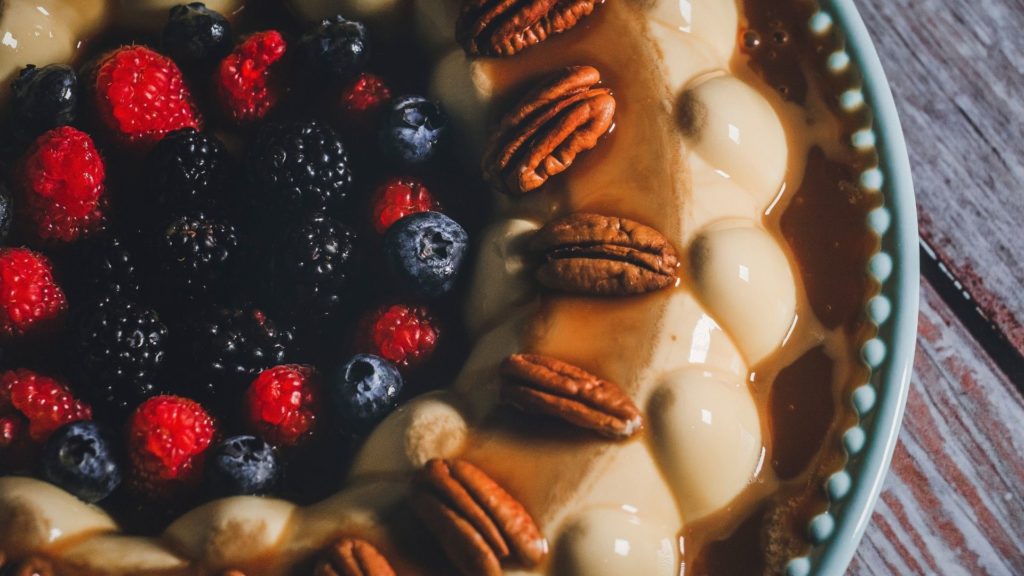
How To Look Young After Losing Weight?
How To Look Young After Losing Weight? Many people today manage to lose weight, however the problem that remains is that they often say that I look like an old man after losing weight.
Yes, this is the problem that comes after a remarkable weight loss. The problem lies in the quality of the food you eat while dieting, as well as the method followed to lose your weight.
In fact when we talk about the topic of staying young by losing weight, it is quite the role of Antioxidants, in fact we group under the term “antioxidants” certain vitamins, trace elements, certain micronutrients and micronutrients naturally present in our food and which have the common effect of helping to protect the cells of the body from the effect of free radicals.
It is true that antioxidants play an important role in cell renewal that allows you to look young despite a remarkable weight loss and your age, but they are not the only ones that play a role here, there are many other precautions to take such as intermittent fasting, the ketogenic diet … etc, which we will see in this article.
First of all, what are antioxidants?
An antioxidant is an agent that prevents or slows down oxidation by neutralizing free radicals. In the body, cellular respiration generates reactive oxygen species that can be the source of free radicals. Excessive free radicals are responsible for cellular damage, particularly to DNA, and can promote disease. Conversely, antioxidants fight against oxidative stress responsible for cellular aging. They therefore have an anti-aging effect.
In foods, the antioxidant power is measured by the ORAC index (for Oxygen Radical Absorbance Capacity). Foods with a high ORAC index are mainly fruits and vegetables (kiwi, citrus fruits, apples, red fruits, cabbage, spinach, carrots…) but also other foods such as chocolate, spices, red wine, shellfish, tea. Some food supplements offer products rich in antioxidants. Cosmetics also contain antioxidant molecules to fight against the effects of aging on the skin.
Free radicals
Free radicals are unstable compounds made up mainly of oxygen. They are generated during the normal functioning of the body, but their production can be increased by pollution, cigarette smoke or prolonged exposure to the sun, for example. Their chemical structure causes them to damage other atoms by “oxidizing” them. However, they are more or less kept in check by the body’s natural antioxidants. However, certain factors can upset this balance. If free radicals exceed the body’s ability to neutralize them, they can contribute to a number of diseases, including cardiovascular disease, certain types of cancer and other diseases associated with aging.
Examples of antioxidant molecules
Among the antioxidant molecules, we find for example:
- vitamins: E, C, A ;
- minerals: selenium, zinc;
- complex molecules: polyphenols, flavonoids, carotenoids … ;
- enzymes such as glutathione peroxidase and superoxide dismutase (SOD): in the body, these enzymes play a natural antioxidant protection role. Glutathione peroxidase is a selenoprotein, which explains the importance of selenium in the fight against free radicals.
Our daily needs in antioxidants
There is no official recommendation specifically for antioxidants because it is simply said that a balanced diet can provide the amount of antioxidants that our body needs. However, there are recommendations for the main source of antioxidants, which are fruits and vegetables: 7 to 10 servings per day.
Berries are the most antioxidant: blueberries, blackberries, cranberries, raspberries, strawberries and prunes. Vegetables include beets, artichokes, asparagus, broccoli, red cabbage, yellow peppers and potatoes (especially those with colored flesh). And don’t forget the legumes, especially white beans, pinto beans and kidney beans.
Best 8 Foods rich in antioxidants :
Here is what you should consider during your weight loss program:
1. Dry beans
The antioxidant content of dried beans differs according to the variety, and some stand out for their high content, notably kidney beans, black beans and pinto beans. Dried beans are a source of fiber and thus help prevent cardiovascular disease by reducing the absorption of bile acids. They also have a strong satiating power.
2. Blueberries
Whether they are wild or cultivated, blueberries are fruits with a strong antioxidant power. These blue berries have the same appearance as blueberries but their flesh is different since it is white. Native to northern Europe and America, this berry is mainly cultivated in Canada.
3. The cranberry
This is another berry that is part of this list of super antioxidant foods! The cranberry is known to treat urinary tract infections. This fruit contains different types of flavonoids that are powerful antioxidants: anthocyanins (which give it its red color), flavonols and proanthocyanins.
Good to know: antioxidant compounds are more abundant in dried cranberries than in fresh cranberries because of the concentration linked to drying. Don’t hesitate to add them to your salads!
4. Artichoke
It is more specifically the heart of cooked artichoke which has antioxidant powers.
5. Blackberry
Coming from the mulberry tree, a tree of the genus Morus whose leaves are used to feed silkworms, the mulberry is to be distinguished from the wild mulberry which grows in brambles and belongs to a completely different botanical genus (Rubus).
The blackberry is very rich in vitamin C and its juice can treat diarrhea but also calm heavy periods. According to several studies, its consumption would limit the risk of developing stomach cancer.
6. Prunes
The laxative virtues of prunes have been proven. But did you know that it also helps fight anxiety thanks to its magnesium content? It is also rich in vitamins E and C, and in potassium, which maintains blood pressure.
The prune is also an excellent natural appetite suppressant because despite its sweet taste, it contains only 20 calories: a real slimming ally not to be neglected!
7. Raspberry
Long live the raspberry, this small fruit that is one of the most effective at countering the oxidation of “bad cholesterol”, a risk factor for cardiovascular disease. Moreover, raspberries inhibit the growth of various cancer cells and tumors of the liver, breast, colon, lung, prostate, cervix, esophagus and mouth.
8. Strawberry
Not only pregnant women are allowed to crave strawberries! In fact, this fruit is excellent for your health because it is low in calories, rich in vitamin C and flavonoids, which help limit the risk of cardiovascular disease and atherosclerosis, i.e. the accumulation of fatty substances in the arteries.
Consuming 350 g of strawberries per day would increase the antioxidant capacity of the body and would help to protect against cancer. Good news, even if the cooking of strawberries generates a loss of 15 % to 20 % of the content in flavonoïdes, the antioxidant substances are nevertheless present in the strawberry jam. Indeed, some flavonoids and ellagic acid would increase slightly with the duration of the storage of the jam, during 3, 6 and 9 months. But it is always better to consume them hollow!
What is the best natural antioxidant?

Astaxanthin is a pigment of the carotenoid family. It’s found naturally in algae, plankton, krill, seafood, crustaceans and various fish such as salmon or trout.
The importance of antioxidants in weight loss
When you decide to lose weight, you must necessarily make changes to your lifestyle. Whether it’s by eating better and/or moving around a little more, you will need to create a calorie deficit.
Each day you need X number of calories to maintain your vital functions when you are at rest. This is called your basal metabolic rate. To this you must add your daily energy expenditure. The more you move, the more your metabolism will increase. The reality is that you eat every day (and that’s normal!). Normally, you eat as much as you expend energy. In this case, there is no change because the calories ingested are equal to those expended.
When you consume too many calories, your body has to store it all. To do this, it will store the extras in adipocytes (fat silos) for later use.
When your calorie intake is below your energy expenditure, your body will tap into your fat stores. Be aware that when this process is triggered, your body goes into panic mode. It’s a bit like losing your job and the money stops coming in. You would have to dip into your personal money reserves and that would stress you out.
Your body reacts the same way when you deprive it of the calories it needs too quickly. To remedy this, it will try to slow down the burning of fatty acids in any way it can. Water retention, lowered basal metabolic rate and decreased energy are all ways to slow down weight loss.
So when you’re in “hunger mode” it means you’re either on a low-calorie diet, or you’re in youth. When we do these two phenomena, to have energy, your body will use the fat reserves, and to use it, it must first degrade it, this degradation will lead to the release of ketone bodies.
So to fight against these ketone bodies, antioxidants play a big role. But we have included in this paragraph two terms that are also essential! Low-calorie diets and fasting! Indeed I meant more precisely the keto diet and intermittent fasting. But what is their relationship with the topic?
How to look young and shiny after weight loss?

The secret lies in combining intermittent fasting with the keto diet.
Several studies have shown the effectiveness of intermittent fasting in weight loss, also many people who have testified to have lost a lot of weight with intermittent fasting. On the other hand there is the keto diet which has also proven its place in the weight loss category. However, in this case the keto diet is used for weight loss, and the intermittent youth will help us to keep our shine and beauty even after a remarkable weight loss.
First of all I think you need to understand what intermittent fasting is and what the ketogenic diet is all about?
Intermittent Fasting
Intermittent fasting is a less strict eating practice than strict fasting. It consists of not eating for a limited period of several hours. During intermittent fasting, you alternate periods of eating and fasting over 24 or 36 hours.
There is no ideal formula, you must find the one that suits you according to your daily routine and eating habits. Here are the most common variations, but you are free to create your own. The first number represents the duration of the fast and the second the period during which you can eat.
Intermittent Fasting 16/8
The 16/8 variation of intermittent fasting is the most recommended for beginners. If this is your first time trying intermittent fasting, it is the easiest to endure.
You can either skip dinner or breakfast.
Intermittent Fasting 20/4
If you have mastered the 16/8 variant, you can switch to the 20/4 variant. For example, you can have your first meal at 2 pm, then a second one before 6 pm and then not eat anything else until 2 pm the next day.
Intermittent fasting 36/12
If you don’t find it difficult to fast for a whole day, you can try the 36/12 variant. You eat only one day out of two and over a 12-hour period.
For example, you eat normally at 8 and 20 o’clock, then you fast for 36 hours, i.e. you don’t eat the first night, the next day, and the second night, before resuming eating at 8 o’clock in the morning.
How intermittent fasting helps us keep our shape and beauty even after a significant weight loss?
When we combine the ketogenic diet with intermittent fasting we manage to lose weight, and in the end we find ourselves with our shape and a young and shiny skin and face.
Indeed the intermittent fasting when it is applied in the long term, that is to say more than 6 months, it leads to a production of a chain of antioxidants, that is to say, there are antioxidants that we bring to our body by the food (exogenous source), and antioxidants that our body produces (endogenous source), so there is a chain of an important quantity of enzymes and antioxidant molecules that will come to fight against the cellular aging that we take after a caloric restriction
So the question that remains is why combine intermittent fasting with the Keto diet? In order to understand more, you first need to know about the keto diet.
Why should the keto diet be done in addition to intermittent fasting?
First of all, what is the keto diet?
The Keto diet is a very low-carbohydrate, high-fat diet. It involves drastically reducing your carbohydrate intake and replacing it with fat. This reduction in carbohydrates puts your body into a metabolic state called ketosis. When this happens, your body becomes incredibly efficient at burning fat for energy. It also converts the fat into ketones in the liver. These can provide energy to the brain. This reduces blood sugar and insulin levels and shifts the body’s metabolism from carbs to fats and ketones.
What is ketosis?
Ketosis is a metabolic state in which your body uses fat for fuel instead of carbohydrates. It occurs when you drastically reduce your carbohydrate intake, thereby limiting the intake of glucose (sugar), which is the main source of energy for cells.
So when the body degrades the fat reserves, it induces as I already told you to a production of ketone bodies, in the case when you do intermittent fasting, ketone bodies will be intermediates that are related to the chain of antioxidants produced during the fasting, and this will induce to a phenomenon that fights squarely against cellular aging, that’s why when you combine fasting with the keto diet, you will find yourself still young and beautiful, even after a remarkable weight loss
Foods to be favored in a Keto diet:
Meat :
Red meat, steak, sausage, bacon, chicken and turkey.
Fatty fish :
salmon, trout, tuna, sardines and mackerel
Seafood :
shrimp, mussels, clams, crab, lobster and lobster
Eggs :
pasture-raised eggs
Butter and cream :
butter and cream
Cheese:
Unprocessed cheeses such as cheddar, goat, cream, blue or mozzarella
Nuts and seeds:
almonds, walnuts, flax seeds, pumpkin seeds, chia seeds
Healthy oils:
extra virgin olive oil, coconut oil and avocado oil, rapeseed oil
Avocados:
Whole avocados or freshly made guacamole
Low-carb vegetables :
greens, tomatoes, onions, peppers, leeks, etc.
Condiments:
Salt, pepper, herbs and spices
Fruits:
berries, strawberries, blueberries, raspberries
To learn more about how to lose weight with the keto diet visit: Keto diet: how to lose weight with fat?
Conclusion
Finally, intermittent fasting is a strategy that can help you maximize the results of your keto diet. Fasting and the keto diet work well together because the ketone bodies produced have the effect of reducing your appetite, making it easier to go long periods without eating.
It is also important to note that it is important to eat the right amount of macronutrients as this will allow you to reach the state of ketosis and produce ketone bodies, which are essential for good mental and physical health despite strict carbohydrate restriction. If you eat too much protein, it may convert to glucose, which is counterproductive to the keto diet and will prevent you from reaching ketosis.
During a ketogenic diet, don’t forget to drink enough water and other healthy beverages (herbal teas, freshly squeezed fruit juices, organic coffee, green tea and bone broth). Also remember to consume salt to provide your body with enough potassium, magnesium and other electrolytes. Use sea salt or pink Himalayan salt to season your dishes or drink salty broths. Electrolytes will not only help your digestion, but also have a beneficial effect on muscle and cell function, sleep, mood and energy.
And of course, while the keto diet differs considerably from other low-fat diets, it’s generally considered healthy for most people who follow it. But be warned, it is always recommended to consult your doctor before starting a keto diet. In particular, people with diabetes, eating disorders, liver or kidney problems or any other genetic deficiency that could interfere with the absorption of fats, as well as pregnant or nursing women should not practice the keto diet.